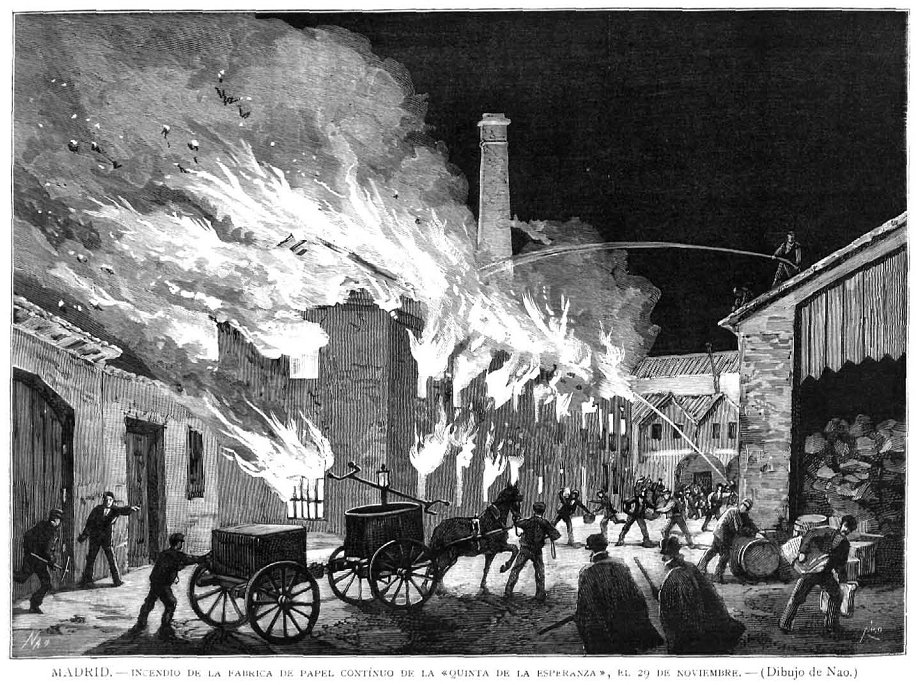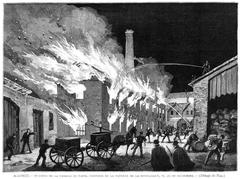
Puente de Segovia Visiting Hours, Tickets, and Historical Sites in Madrid
Date: 18/07/2024
Introduction
Puente de Segovia, one of Madrid’s most historic and architecturally significant landmarks, stands as a testament to the city’s rich heritage and evolution. Commissioned by King Philip II in 1561, this iconic bridge was designed by Juan de Herrera, a prominent architect of the Spanish Renaissance known for his work on the El Escorial monastery (source). Completed in 1584, Puente de Segovia is characterized by its nine granite arches that span the Manzanares River, reflecting the engineering prowess and aesthetic sensibilities of the era. Over the centuries, the bridge has played a pivotal role in Madrid’s urban development, connecting the city center to its western regions and bearing witness to key historical events, including the Spanish War of Independence and the Spanish Civil War (source). Today, Puente de Segovia is not just a vital pedestrian link but also a cherished cultural icon, attracting both locals and tourists who come to admire its timeless beauty and historical significance.
Table of Contents
- [Introduction](#introductionintroduction)
- [History and Significance](#history-and-significancehistory-and-significance)
- [Early Beginnings and Royal Commission](#early-beginnings-and-royal-commissionearly-beginnings-and-royal-commission)
- [Herrera’s Architectural Triumph](#herreras-architectural-triumphherreras-architectural-triumph)
- [A Gateway to Madrid](#a-gateway-to-madrida-gateway-to-madrid)
- [Witness to History](#witness-to-historywitness-to-history)
- [Restoration and Modern Significance](#restoration-and-modern-significancerestoration-and-modern-significance)
- [A Cultural Icon](#a-cultural-icona-cultural-icon)
- [A Place for Reflection and Recreation](#a-place-for-reflection-and-recreationa-place-for-reflection-and-recreation)
- [Visitor Information](#visitor-informationvisitor-information)
- [Ticket Prices](#ticket-pricesticket-prices)
- [Opening Hours](#opening-hoursopening-hours)
- [Travel Tips](#travel-tipstravel-tips)
- [Best Time to Visit](#best-time-to-visitbest-time-to-visit)
- [Photography](#photographyphotography)
- [Guided Tours](#guided-toursguided-tours)
- [Weather](#weatherweather)
- [Nearby Attractions](#nearby-attractionsnearby-attractions)
- [Royal Palace](#royal-palaceroyal-palace)
- [Casa de Campo](#casa-de-campocasa-de-campo)
- [Catedral de la Almudena](#catedral-de-la-almudenacatedral-de-la-almudena)
- [Accessibility](#accessibilityaccessibility)
- [Frequently Asked Questions](#frequently-asked-questionsfrequently-asked-questions)
- [Conclusion](#conclusionconclusion)
- [References](#referencesreferences)
History and Significance
Puente de Segovia, an enduring symbol of Madrid, boasts a rich history intertwined with the city’s evolution. More than just a bridge, it stands as a testament to architectural prowess and a silent witness to the passage of time and the unfolding of history.
Early Beginnings and Royal Commission
The bridge’s origins can be traced back to a less sturdy wooden structure that once spanned the Manzanares River. Recognizing the need for a more robust crossing, King Philip II, in 1561, commissioned the construction of a new stone bridge. This task fell upon the capable shoulders of Juan de Herrera, a renowned architect celebrated for his work on the El Escorial monastery.
Herrera’s Architectural Triumph
De Herrera, a prominent figure of the Spanish Renaissance, infused the bridge with his signature style. Completed in 1584, Puente de Segovia showcased a blend of functionality and aesthetics. Its nine granite arches, spanning a total length of 278 meters, were a testament to the engineering capabilities of the time. The bridge’s design, characterized by its understated elegance and robust structure, became a model for future bridge constructions in Spain.
A Gateway to Madrid
Puente de Segovia quickly became a vital artery connecting the city center to the western side of the Manzanares River. This connection facilitated trade and movement, solidifying the bridge’s importance in Madrid’s urban development. Over the centuries, it witnessed the ebb and flow of city life, from the daily commutes of ordinary citizens to the grand processions of royalty.
Witness to History
The bridge’s strategic location rendered it a silent observer to pivotal historical events. During the Spanish War of Independence, Napoleon’s troops clashed with Spanish forces near the bridge, leaving their mark on the city’s memory. Later, during the Spanish Civil War, the bridge found itself caught in the crossfire, bearing witness to the turmoil that gripped the nation.
Restoration and Modern Significance
Despite enduring the ravages of time and conflict, Puente de Segovia has been meticulously preserved. Restoration efforts throughout the centuries have ensured its structural integrity and aesthetic appeal. Today, it stands as a pedestrian bridge, offering breathtaking views of the cityscape and attracting locals and tourists alike.
A Cultural Icon
Puente de Segovia has transcended its functional purpose to become a cherished cultural icon. Its image graces countless postcards and souvenirs, symbolizing the city’s enduring spirit and architectural heritage. The bridge’s presence in literature, paintings, and films further cements its place in Madrid’s cultural tapestry.
A Place for Reflection and Recreation
Today, Puente de Segovia serves as a tranquil escape from the bustling city. Locals and tourists alike stroll along its length, enjoying panoramic views of the Royal Palace, the Casa de Campo, and the Madrid skyline. The bridge’s timeless beauty and historical significance offer a unique opportunity for reflection and appreciation of Madrid’s rich past.
Visitor Information
Ticket Prices
Visiting Puente de Segovia is free of charge. There are no ticket requirements, making it an accessible attraction for everyone.
Opening Hours
Puente de Segovia is open to the public 24/7. Whether you prefer a sunrise visit or an evening stroll, the bridge is always accessible.
Travel Tips
- Best Time to Visit - Early morning or late afternoon provides the best lighting for photos and a peaceful experience.
- Photography - The bridge offers excellent vantage points for capturing the Madrid skyline, especially during sunset.
- Guided Tours - While the bridge itself doesn’t offer guided tours, many city tours include Puente de Segovia as a highlight.
- Weather - Check the weather forecast before your visit to ensure a pleasant experience.
Nearby Attractions
- Royal Palace - Just a short walk from Puente de Segovia, the Royal Palace is a must-visit for its opulent architecture and gardens.
- Casa de Campo - This large park near the bridge is perfect for a leisurely walk or a picnic.
- Catedral de la Almudena - A stunning cathedral located close to the Royal Palace, offering beautiful views of the city.
Accessibility
Puente de Segovia is accessible to pedestrians, including those with mobility issues. There are ramps and smooth pathways ensuring that everyone can enjoy its beauty.
Frequently Asked Questions
Q: What are the visiting hours for Puente de Segovia?
A: Puente de Segovia is open 24 hours a day, 7 days a week.
Q: Are there guided tours available for Puente de Segovia?
A: While the bridge itself doesn’t offer guided tours, many city tours include Puente de Segovia as part of their itinerary.
Conclusion
No trip to Madrid is complete without experiencing the allure of Puente de Segovia. Whether strolling across its granite arches at sunset, admiring its architectural grandeur, or simply pausing to reflect on the history it has witnessed, the bridge offers a captivating glimpse into the soul of Madrid. Download the Audiala app for more travel tips and updates, and don’t forget to follow us on social media for the latest information.



































































































